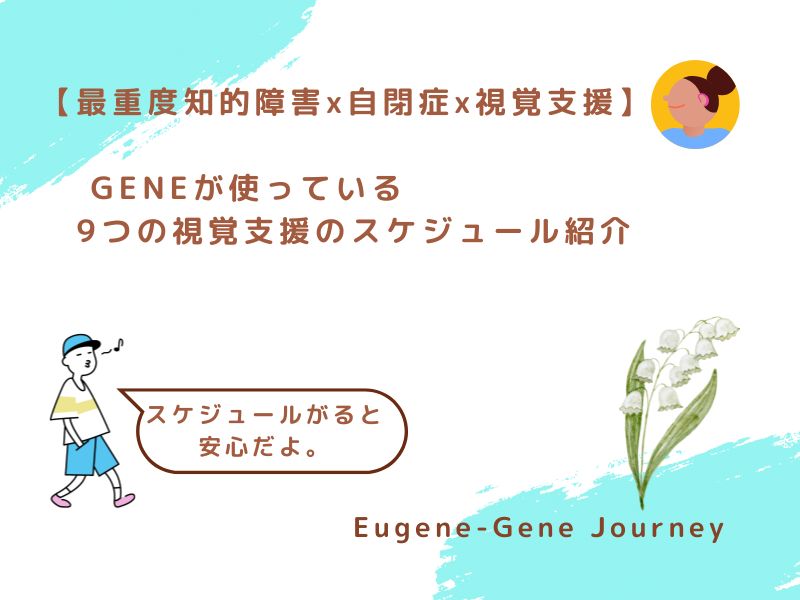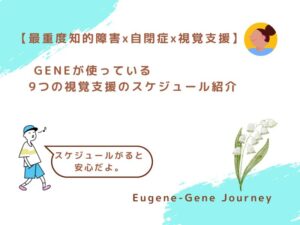GENEは「言葉」で予定を確認することはできません。
でも、「見える予定」があれば、毎日の生活がグッと落ち着きます。
今回は、学校や家庭で使っている9つの視覚支援スケジュールをご紹介します。
1. 学校リュックにつけている“その日予定”ミニスケジュール
いつでも確認できるように、GENEのリュックにはその日のスケジュールカードがついています。
内容は基本的に毎日同じですが、時々病院などの特別な予定が入ることも。
予定に変化がある日は、何度もカードを確認している様子があり、「いつもと同じであること」を確認することが、GENEにとっての安心に繋がっていると感じます。
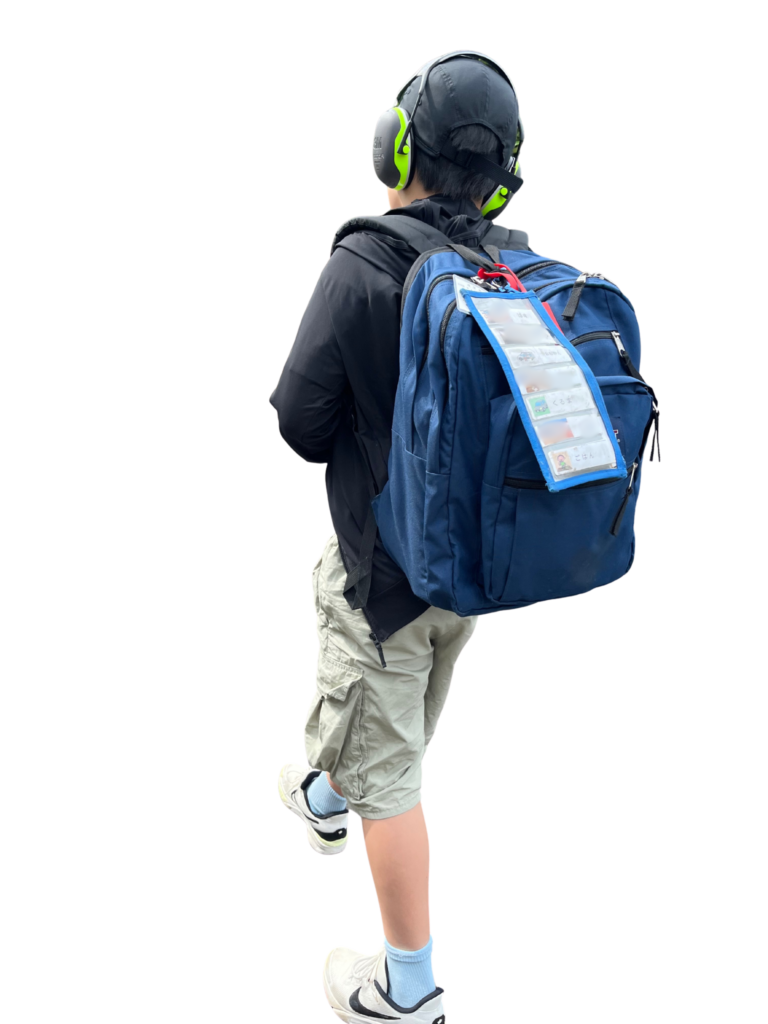
リュックについた1日のスケジュール
2. 学校のファイル式スケジュール
学校では、日々の活動をファイルに入れたスケジュールで管理。
終わった項目は先生に確認してもらって、カードを裏返していきます。
授業だけでなく、「トイレ」「お茶」「iPadを見る」など細かな項目も含まれ、視覚的に1日の流れが見えることで、勝手な行動が減ったように思います。
興味の薄い授業でも、「これが終われば給食だ」「体育が待っている」と先の楽しみを想像できるようになり、取り組み方にも変化が見られました。
3. 校外学習用 首かけカードスケジュール
校外学習や行事など、特別な外出がある日は首からかけられるタイプのめくり式カードを使用。
いつでも自分で予定を確認できることが、外出先での安心に繋がっています。
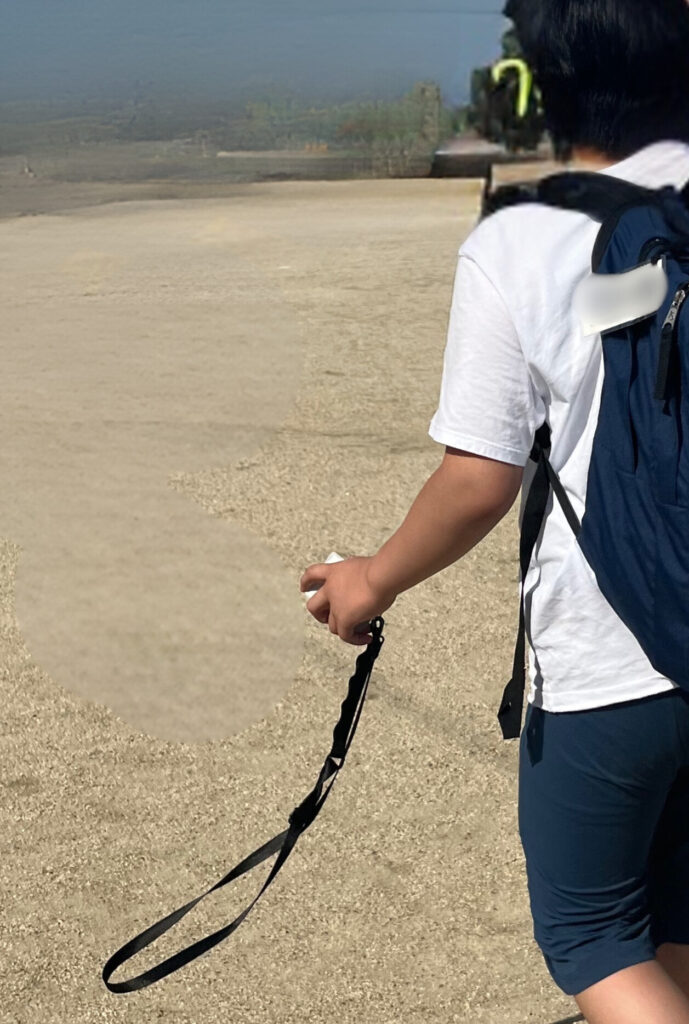
左手に持ってるのが、首掛けカードスケジュール。ずっと握りしめてる。
4. 学校の1日の流れスケジュール
学校での1日の全体スケジュールも掲示されています。
朝の会から下校までの流れが一覧で見えることで、「今どこにいるのか」「あと何が残っているのか」が明確になり、安心感に繋がります。
5. 学校の週間スケジュール
給食がパンの日、体育がある日、好きな授業がある日など、週間スケジュールを見ることで、先の楽しみを見つけやすくなります。
予測できることで気持ちの準備がしやすくなるようです。
6. 学校の給食スケジュール
食へのこだわりが強いGENEにとって、「今日の給食」がわかることはとても大切。
給食スケジュールで好きなメニューの日を心待ちにしたり、苦手なメニューの日に気持ちの準備をしたりする様子が見られます。
7. 家の3週間分スケジュール
自宅では、3週間分のスケジュールボードを使用。
帰宅後、その日の予定カードを外し、3週間後に控えている予定を自分で確認しています。
家族が勝手にカードを動かすと、すぐに気づくほど、GENEにとって“自分のスケジュール”はとても大事なものになっています。
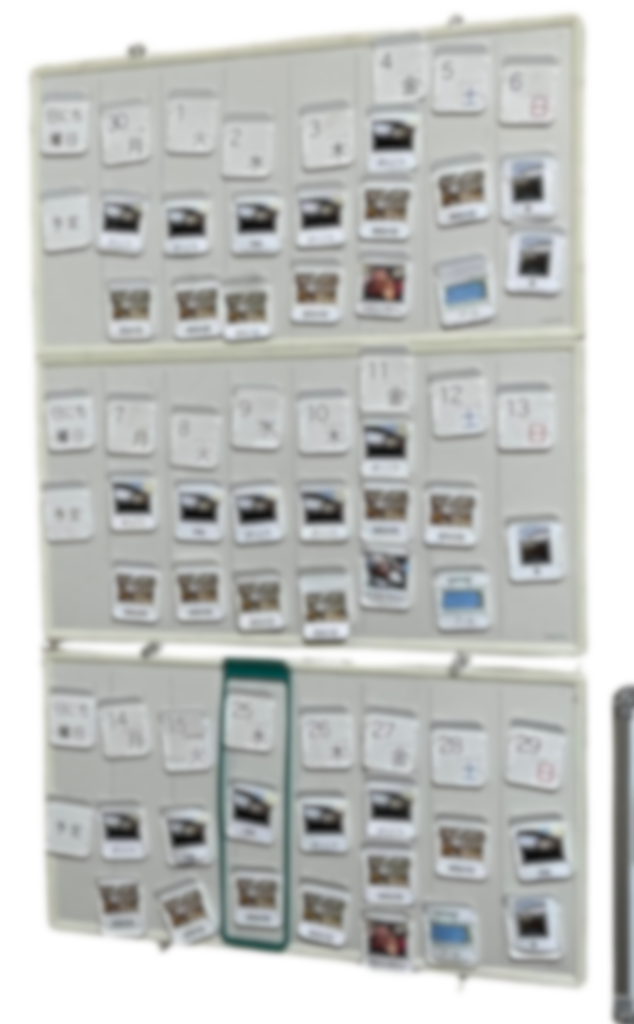
家の3週間のスケジュール
8. おやつスケジュール
「1番スケジュール通りに進まない時間」でもあります(笑)
でも、だからこそ視覚的な順番や選択肢を示すことで、少しずつ見通しを持っておやつ時間を過ごせるようになっています。
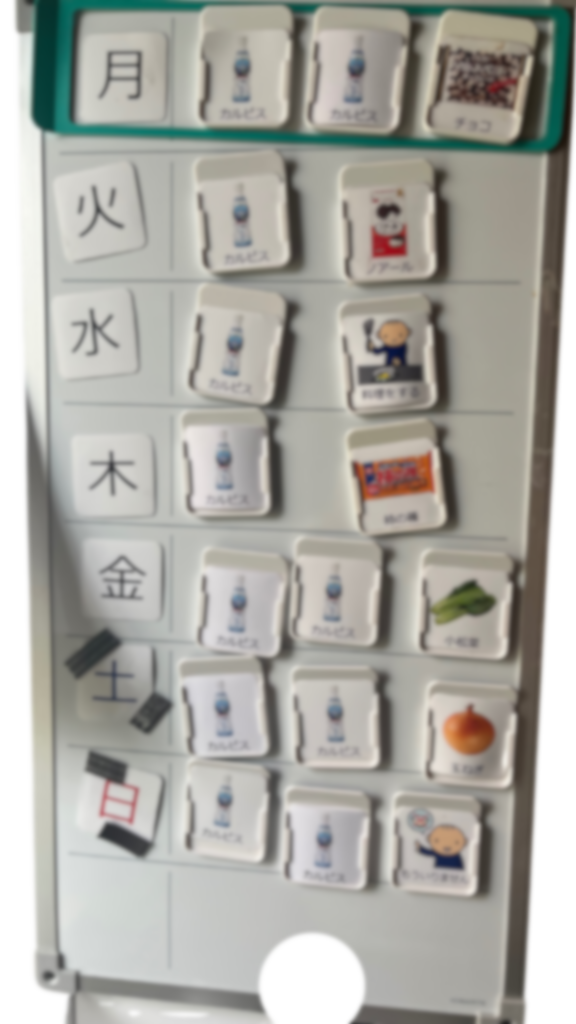
一番機能していないかも笑 おやつスケジュール
9. 家のお出かけスケジュール
学校と同じように、予定カードをファイルに入れて、終わったらひっくり返すスタイル。
家庭でも学校と同じルールにすることで、混乱が減りやすくなります。
とはいえ、家のお出かけは予定通りにいかないことも多く、GENEの中では「聞いてないよ〜!」という気持ちもあるかもしれません(笑)

ひっくり返すと大好きなジョージが出てくるスケジュール
見える予定があることは、“予測できる安心”
GENEにとって、「スケジュールがある」ことは、“言葉で説明されなくてもわかる”という安心材料。
視覚的に予定が見えることで、自分の意思で確認できるし、先のことを想像して、気持ちの準備をしたり、心を落ち着けたりできる。
わたしたちも、カレンダーやスケジュール帳で予定を確認して安心するように、GENEにとってもスケジュールは、日々を安心して過ごすための大切なツールなのです。
9 Visual Schedules That Help GENE Feel Safe
GENE cannot understand spoken schedules.
But when plans are visible, his day becomes noticeably calmer and smoother.
Here are the nine types of visual schedules we use at home, at school, and during outings to support GENE’s daily life.
1. Mini Schedule on GENE’s Backpack
Every morning, a small schedule card is clipped to GENE’s backpack.
The contents are mostly the same each day, but sometimes include special appointments like hospital visits.
On days when plans change, we often see him checking the card repeatedly.
This helps him confirm that “everything is okay” — a big source of comfort.
2. File-Type Schedule at School
At school, GENE uses a file-style schedule with cards for each daily activity.
After completing each activity, he flips the card to the back to mark it as done.
This visual flow has reduced impulsive behavior and helped him understand what comes next.
Even during activities he doesn’t enjoy, knowing “lunch is after this” or “P.E. is coming” helps him stay engaged.
3. Lanyard Schedule for Field Trips
For school outings or special events, GENE wears a flip-style card schedule on a lanyard.
Being able to check the plan by himself while outside helps reduce anxiety and builds independence.
4. Whole-Day Schedule Displayed at School
A complete day’s schedule is posted in the classroom, from morning meeting to dismissal.
GENE can clearly see “where we are now” and “what’s still coming,” which helps him stay grounded throughout the day.
5. Weekly School Schedule
Seeing the weekly overview lets GENE look forward to “bread lunch day,” P.E., or other favorite moments.
This helps him mentally prepare for both preferred and less preferred days.
6. Lunch Menu Schedule
Food is a sensitive topic for GENE, so knowing what’s on the lunch menu matters a lot.
He gets visibly excited for favorite meals—and braces himself for the tough ones.
This simple tool helps him emotionally prepare.
7. 3-Week Home Schedule
At home, we use a visual board that shows three weeks of plans.
Each day after school, GENE removes the current day’s card and checks what’s coming next.
If anyone moves the cards without his permission—he notices instantly. It’s his schedule.
8. Snack Time Schedule
Snack time is the most chaotic part of the day—but that’s exactly why a visual aid helps.
By showing choices and sequence clearly, we’re gradually helping GENE gain more control and calm during this “wild time.”
9. Home Outing Schedule
We use the same flip-style card system for outings at home as at school.
Keeping the rules consistent across environments helps reduce confusion.
Of course, home plans don’t always go as expected.
But even a loose visual guide provides some peace of mind for GENE.
Visual Schedules = Predictable Peace
For GENE, a visible schedule means:
I don’t need words to understand. I can check for myself. I know what’s coming. I feel ready.
Just like we feel grounded by checking a planner or calendar,
GENE feels anchored by having visual structure in place.
Visual schedules aren’t just tools—they’re lifelines for safer, calmer, more confident days.

